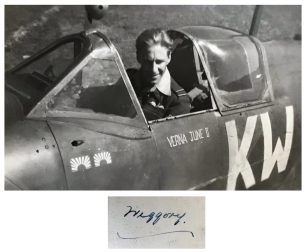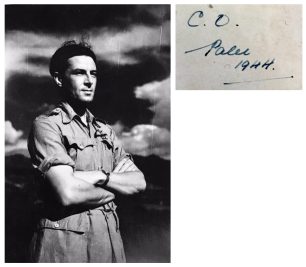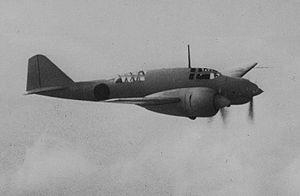615 Squadron – Spitfires at Last!
Following their departure from Kenley on 21 April 1941, 615 Squadron continued to operate the Hawker Hurricane as their mount on travels to Wales, Kent and finally India. Stationed at Alipore, near Calcutta (Kolkata), it was not until 30 September 1943 that they began swapping their Hurricane IIs for Spitfire Vs, this process being completed in mid-October. Here we look at the first few months of Spitfire operations with the squadron. The remainder of October at Allipore was an intense period of familiarisation and training on their new mounts. At the end of month the squadron diary records 30 pilots (including the CO and Flight Leaders) on strength. On 1 November, the squadron moved closer to the action at Chittagong (Chattogram in modern day Bangladesh), the accommodation here being described as “…bamboo bashas” not as comfortable as their previous home in Alipore, for many though it was a return to this style of living.
At Chittagong the squadron quickly commenced operations, their first acting as a five aircraft dive-bomber escort on a raid near Maungdaw. Aerial success soon followed, the first victory with their Spitfires came on 8 November when F/Lt P Louis DFC DFM & F/O S L Weggery (RNZAF) downed a Mitsubishi Ki-46 Type 100 (Dinah) flying at 25000ft, this type was recorded in the squadron diary as a “H.Q. 100 Recce.” A familiar face from Kenley flew with the squadron this day, in the shape of Wing Commander Robert F Boyd, on a practice interception with the squadron. Boyd had been the Wing Commander Flying at Kenley between 14 December 1941 and 23 April 1942; famously he had been on patrol with the Kenley Station Commander, Group Captain Victor Beamish, when they spotted the German fleet making the “Channel Dash” on 11 February 1942.
Another “H.Q. 100 Recce” fell to Flight Sergeant A R Hyde on 10 November; on this occasion the Dinah was caught at 29,000ft and downed after an engagement last six minutes. The squadron jubilation was tinged with sadness however when Sergeant Guy Grenier, a native of Sri Lanka, failed to return from an air-to-sea firing exercise. He was last seen flying at around 300ft above the sea but despites searches continuing into the following day no sign of him or his aircraft was ever found. The squadron continued to be scrambled for the next few days without success, but on 16 November. Flying Officer K F Gannon (RAAF) downed the squadron’s third Dinah. It was caught off the coast at 26,000ft and crashed in flames near Feni after a 3.5 second burst from Gannon.
The pattern of uneventful scrambles resumed again until 23 November when a formation of Japanese fighters approached Chittagong from the south-east. The squadron were scrambled but the enemy split into small groups, as a result only three pilots got in bursts without effect. On this occasion the Japanese achieved some success in shooting down Flying Officer H L A Leonard (RCAF), fortunately he was able to bale out successfully and returned to the squadron unhurt the following day. The next action for the squadron occurred on 29 November when they were scrambled to intercept an enemy raid on Feni, results were disappointing with only Squadron Leader R H Holland DFC claiming an enemy fighter damaged. Another interception followed the next day when the squadron were scrambled to an enemy raid on Argatala, north east of Chittagong. The attackers consisted of 12 bombers with a similar number of fighters as escort, although better than the previous day the results were disappointing. Only four squadron pilots made contact resulting in claims of one bomber probably shot down and four fighters damaged.
December at Chittagong started quietly with daily scrambles, mainly intercepting friendly aircraft, but with convoy patrols being added to the routine a familiar role for the older hands with the squadron. The situation changed on 11 December when they were notified of a move to “Dog”, or Dohazari, airfield a few kilometres south-east of Chittagong. The advance party left the next day with the 16 squadron Spitfires following down on the 13th, but not before Lord Mountbatten had paid the squadron a visit. Initial activity at Dohazari consisted of a Section of Spitfires spending the night on readiness back at Chittagong. Following the ending of this duty the routine became one of scrambles to intercept invariably friendly aircraft, or failed contacts. This relatively quiet period ensured the Christmas festivities were not forgotten “the messes were decorated with various foliage and the spirit of Christmas was upheld in all of them in the usual RAF manner…” Winston Churchill sent the squadron a Christmas message in his role as honorary commodore.
The situation livened dramatically on Boxing Day however bringing “”Joy” once more today.” At 11.15 Purple Section, consisting of Flying Officer G W Andrews and Flight Sergeant H B Chatfield (both RAAF), were scrambled to meet an incoming raid. The plot eventually gave the enemy formation as 20+ Mitsubishi Ki-21 Type 97 “Sally” bombers and 50+ fighters as escort. Due to the size of the enemy formation, Purple Section were told to orbit Dohazari and await the rest of the squadron which had been scrambled. Despite this Andrews and Chandler launched a series of attacks on the enemy formation “The attack was watched from the ground and many had the satisfaction of seeing 3 bombers and 1 fighter crash to earth.” Another bomber was damaged by Flying Officer Andrews. The attacks by “Purple” Section were due to the size of their formation and their ability to slip through the Japanese fighter screen undetected to make a series of slashing attacks. The other members of the squadron failed to make contact with the enemy and, whilst Andrews and Chatfield escaped unscathed, Sergeant D L Wright was shot down and killed. The crash site was located later in the day by Squadron Leader Holland and Flying Officer Aurisch in the squadron hack, a Tiger Moth.
Scheduled practice flying on 27 December was curtailed by report of an incoming low level raid, which failed to materialise Scrambles over the following days also failed to produce any contact. The morning of New Years’ Eve passed quietly before the squadron were scrambled to meet an incoming raid mid-afternoon. Estimated to be around six aircraft, the enemy formation split into pairs when spotted by 615 Squadron. Results of the combat were once again disappointing, with only Pilot Officer Leonard engaging the enemy, damaging a Nakajima Ki-43 “Oscar”. Significantly, radio communication with the ground was reported as poor before the enemy formation was sighted, which could account in part for the poor interception performance. The remainder of New Year’s Eve went unremarked by the squadron diary.
The New Year brought a familiar routine of missed interceptions and practice flights, but with an added twist, the weather forced the temporary abandonment of Dohazari for Feni. At Dohazari, as a result of the heavy rain, the runway was described as “a treacherous river bed” as the squadron departed, some aircraft even diverted into Chittagong due to the weather conditions. After a 48-hour interlude, the squadron were able to return to base. The squadron enjoyed their first combat victory of 1944 on 16 January when Flight Lieutenant Louis and Flying Officer Weggery downed another “Dinah”, the fourth since they began flying Spitfires. The squadron was frustrated by the lack of activity for the remainder of the month, with only the arrival of Squadron Leader David McCormack DFC and BAR (RAAF) as the new officer commanding the Squadron. McCormack was no stranger to 615, having joined the squadron for the first time back in May 1941 and this was now his third spell with the unit.
February began with a visit from the Lethbridge Mission, whose task it was to investigate conditions faced by personnel in fighting the Japanese. Comprised of representatives from the RAF, USAAF, RCAF and US Navy they were introduced to the Squadron by Wing Commander Robert Boyd of 166 Wing. The Mission then “informally discussed different topics” with the aircrew. The Mission subsequently visited the co-located 79 Squadron before returning to Chittagong. The Squadron’s success in downing Japanese reconnaissance aircraft ended on 3 February. The plot tracked the aircraft approaching Chittagong from the north-east at 34,000ft but, despite the performance of their Spitfire Vs, it evaded interception by diving and flying south.
The diary for 7 February has a rather enigmatic entry regarding “a terrific combat this evening”, however, it seems to relate to a sporting encounter rather than an aerial engagement. What exactly was involved is not clear although it noted “Chan” Chandler “knocked down five”, other pilots “saved the Squadron on two occasions”, outmanoeuvred the opposition and Pilot Officer Oldham won the respect of the opposition with his speed and strategy. The result of the unnamed contest was apparently a draw.
The Squadron saw some real action on the morning of 9 February when it joined a “melee” in the Maungdaw-Buthidaung-Cox’s Bazaar area, their target was a reported 50+ enemy aircraft. While Red Section remained as top cover, the eight aircraft of blue and White Sections engaged the Japanese. The actions resulted in the claim of a Mitsubishi A6M Zero-Sen (Hamp) by Warrant Officer “Chan” Chandler, with other pilots claiming damage on a further seven aircraft. The squadron returned safely to Dohazari with only one Spitfire receiving minor damage from enemy fire. A scramble in the afternoon failed to meet the plotted enemy formation when it turned east as the Squadron headed towards it.
The Squadron were busy again the following morning, scrambling to meet an enemy formation heading west. Enemy formations were sighted above and below the Squadron near Maungdaw but were too far away for contact to be made. Apart from two routine Wellington escort missions the remaining time at Dohazari passed uneventfully, with preparations for a move to Nazir close to the Burmese border commencing on 22 February. As usual “cookhouse gen” was rife with speculation about the new base. Significantly the “Acorn” also launched on 22 February as the new Squadron magazine, with hopes that subsequent issues would be even more successful. The advance party left for Nazir on 24 February with the 17 Spitfires following the next day. Although it was a “paddy strip”, the domestic accommodation was “very pleasant” with the new bamboo huts set on the slopes of gentle hills.
615 Squadron would continue to operate the Spitfire V from various other bases in the area until May 1944 when they moved on to the Spitfire VIII. The original Squadron continued to fly the Spitfire until 10 June 1945 when it disbanded at Cuttack, the same day 135 Squadron, flying P-47 Thunderbolts, assumed the title of 615 Squadron.
Sources:
National Archives, Kew: AIR 27/2123 & AIR 27/2124


















No Comments
Add a comment about this page